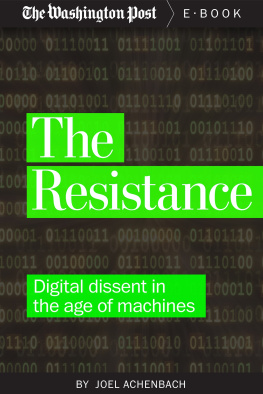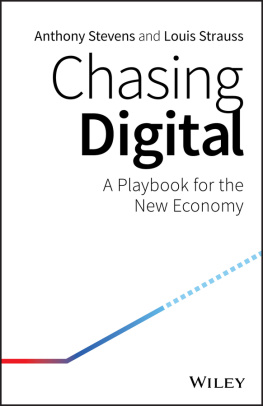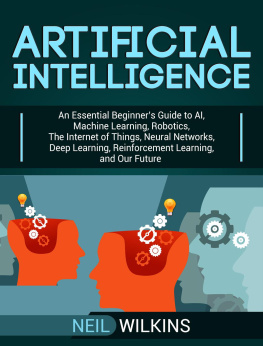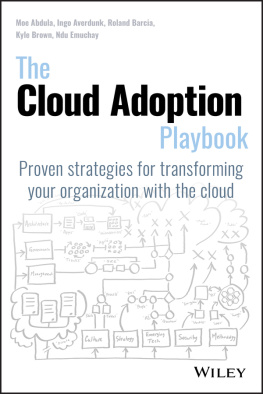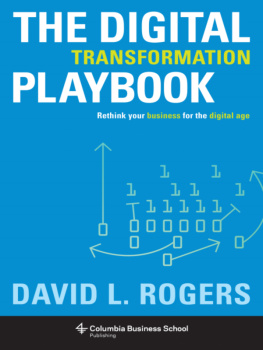Malcolm Frank - What To Do When Machines Do Everything: How to Get Ahead in a World of AI, Algorithms, Bots, and Big Data
Here you can read online Malcolm Frank - What To Do When Machines Do Everything: How to Get Ahead in a World of AI, Algorithms, Bots, and Big Data full text of the book (entire story) in english for free. Download pdf and epub, get meaning, cover and reviews about this ebook. year: 2017, publisher: Wiley, genre: Romance novel. Description of the work, (preface) as well as reviews are available. Best literature library LitArk.com created for fans of good reading and offers a wide selection of genres:
Romance novel
Science fiction
Adventure
Detective
Science
History
Home and family
Prose
Art
Politics
Computer
Non-fiction
Religion
Business
Children
Humor
Choose a favorite category and find really read worthwhile books. Enjoy immersion in the world of imagination, feel the emotions of the characters or learn something new for yourself, make an fascinating discovery.

- Book:What To Do When Machines Do Everything: How to Get Ahead in a World of AI, Algorithms, Bots, and Big Data
- Author:
- Publisher:Wiley
- Genre:
- Year:2017
- Rating:3 / 5
- Favourites:Add to favourites
- Your mark:
What To Do When Machines Do Everything: How to Get Ahead in a World of AI, Algorithms, Bots, and Big Data: summary, description and annotation
We offer to read an annotation, description, summary or preface (depends on what the author of the book "What To Do When Machines Do Everything: How to Get Ahead in a World of AI, Algorithms, Bots, and Big Data" wrote himself). If you haven't found the necessary information about the book — write in the comments, we will try to find it.
Refreshingly thought-provoking The Financial Times
The essential playbook for the future of your business
What To Do When Machines Do Everything is a guidebook to succeeding in the next generation of the digital economy. When systems running on Artificial Intelligence can drive our cars, diagnose medical patients, and manage our finances more effectively than humans it raises profound questions on the future of work and how companies compete. Illustrated with real-world cases, data, and insight, the authors provide clear strategic guidance and actionable steps to help you and your organization move ahead in a world where exponentially developing new technologies are changing how value is created.
Written by a team of business and technology expert practitionerswho also authored Code Halos: How the Digital Lives of People, Things, and Organizations are Changing the Rules of Businessthis book provides a clear path to the future of your work.
The first part of the book examines the once in a generation upheaval most every organization will soon face as systems of intelligence go mainstream. The authors argue that contrary to the doom and gloom that surrounds much of IT and business at the moment, we are in fact on the cusp of the biggest wave of opportunity creation since the Industrial Revolution. Next, the authors detail a clear-cut business model to help leaders take part in this coming boom; the AHEAD model outlines five strategic initiativesAutomate, Halos, Enhance, Abundance, and Discoverythat are central to competing in the next phase of global business by driving new levels of efficiency, customer intimacy and innovation.
Business leaders today have two options: be swallowed up by the ongoing technological evolution, or ride the crest of the wave to new profits and better business. This book shows you how to avoid your own extinction event, and will help you;
- Understand the untold full extent of technologys impact on the way we work and live.
- Find out where were headed, and how soon the future will arrive
- Leverage the new emerging paradigm into a sustainable business advantage
- Adopt a strategic model for winning in the new economy
The digital world is already transforming how we work, live, and shop, how we are governed and entertained, and how we manage our money, health, security, and relationships. Dont let your businessor your careerget left behind. What To Do When Machines Do Everything is your strategic roadmap to a future full of possibility and success. Or peril.
Malcolm Frank: author's other books
Who wrote What To Do When Machines Do Everything: How to Get Ahead in a World of AI, Algorithms, Bots, and Big Data? Find out the surname, the name of the author of the book and a list of all author's works by series.

